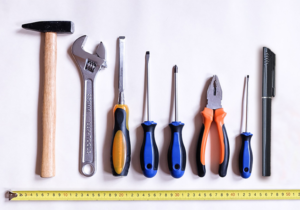Women: If You Want First Author Publications, Have a Female Boss
This week JAMA came out with a study from Erin Aakhus and colleagues at the University of Pennsylvania. The authors performed a cross sectional analysis of top 10 STEM journals including such powerhouses as Science, Nature, JAMA and NEJM in order to determine if there was an association between of last author gender and first author status. The group was particularly interested in knowing if women were more likely to be co-first authors if there was a male group leader. Spanning 10 years of literature and including over 30,000 research articles, this was the largest study of its kind.

These women are smiling because they are going to smash the patriarchy.
In spite of their initial hypothesis that women would be more likely to share co-first authorship, the group found no evidence this was occuring in publications in basic science journals. The authors did, however, find that women were more likely to be sole first authors if the last author on the work was a woman. The group also found that female co-first authors were less likely than their male counterparts to be listed first in the byline when papers were published in top tier clinical journals.
This just seems to be more bad news for women and it’s hard not to have the take-away message that women do a better job of promoting their female trainees (alternatively: men do a significantly worse job of promoting the work of their female trainees?). These numbers are particularly vexing given that women are underrepresented in almost every area of STEM, but particularly at higher academic ranks, such as professors, endowed chairs and department chairs.
These limitations also aren’t unique to academia. In late 2017, Google engineer James Damore gained notoriety for espousing the view that ‘the unique biology’ of women made them less technically capable of performing in tech field. Scientists who know quite a bit about said unique biology disagreed, as did Google, which terminated Damore.
While Aakhus’ paper raised academic eyebrows, it hardly comes as a surprise to women in STEM who struggle with bias favoring men in allocating key resources and get paid better for doing the same academic jobs. In the meantime, it seems like an idea to encourage female trainees to find outstanding female mentors.
HAVE SOME THOUGHTS ON MENTORING WOMEN? WE MADE A COMMENTS SECTION JUST FOR YOU!





1 Comment
… I guess I’ve treated my female mentees exactly the same way I’ve treated my male mentees, and they’ve done really well. Of course, they’ve been frickin powerhouses, so I’m not sure I can take much credit for it. I don’t know that you need to overthink this.You give anyone, regardless of gender, resources, and credit for the work they do, and they can do pretty well.